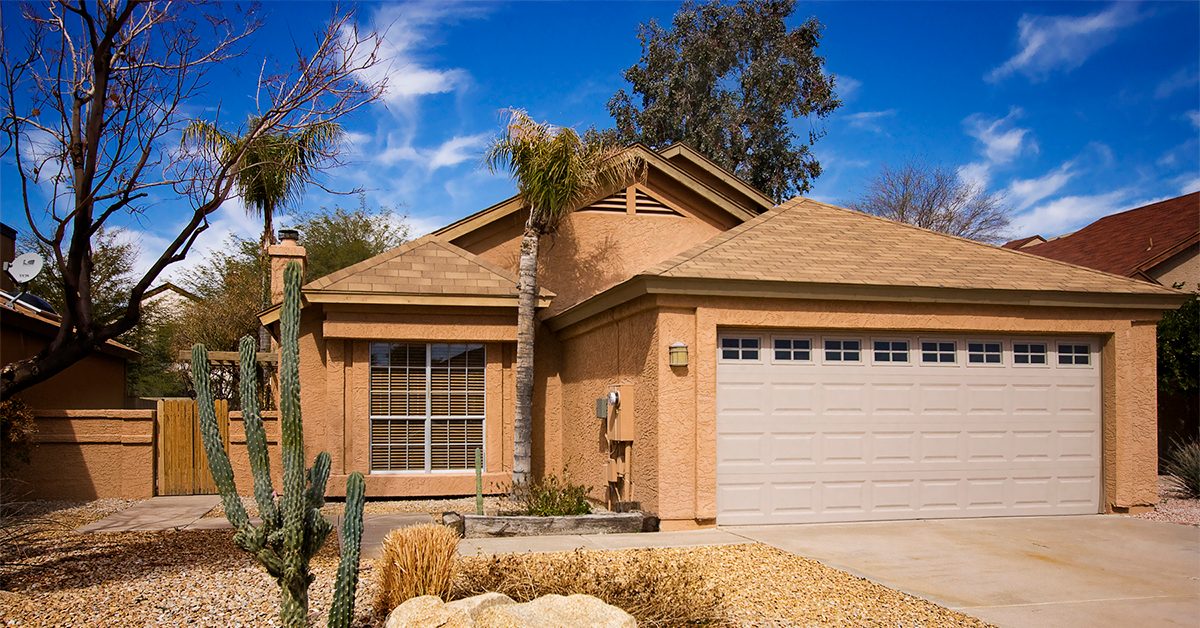Existing-Home Sales Slipped 0.4% in August
WASHINGTON (September 21, 2022) – Existing-home sales experienced a slight dip in August, marking the seventh consecutive month of declines, according to the National Association of REALTORS®. Month-over-month sales varied across the four major U.S. regions as two regions recorded increases, one was unchanged and the other posted a drop. On a year-over-year basis, however, sales fell in all regions.
Total existing-home sales,1 completed transactions that include single-family homes, townhomes, condominiums and co-ops, notched a minor contraction of 0.4% from July to a seasonally adjusted annual rate of 4.80 million in August. Year-over-year, sales faded by 19.9% (5.99 million in August 2021).
“The housing sector is the most sensitive to and experiences the most immediate impacts from the Federal Reserve’s interest rate policy changes,” said NAR Chief Economist Lawrence Yun. “The softness in home sales reflects this year’s escalating mortgage rates. Nonetheless, homeowners are doing well with near nonexistent distressed property sales and home prices still higher than a year ago.”
Total housing inventory2 registered at the end of August was 1,280,000 units, a decrease of 1.5% from July and unchanged from the previous year. Unsold inventory sits at a 3.2-month supply at the current sales pace – identical to July and up from 2.6 months in August 2021.
“Inventory will remain tight in the coming months and even for the next couple of years,” Yun added. “Some homeowners are unwilling to trade up or trade down after locking in historically-low mortgage rates in recent years, increasing the need for more new-home construction to boost supply.”
The median existing-home price3 for all housing types in August was $389,500, a 7.7% jump from August 2021 ($361,500), as prices ascended in all regions. This marks 126 consecutive months of year-over-year increases, the longest-running streak on record. However, it was the second month in a row that the median sales price retracted after reaching a record high of $413,800 in June, the usual seasonal trend of prices declining after peaking in the early summer.
Properties typically remained on the market for 16 days in August, up from 14 days in July and down from 17 days in August 2021. Eighty-one percent of homes sold in August 2022 were on the market for less than a month.
First-time buyers were responsible for 29% of sales in August, consistent with July 2022 and August 2021. NAR’s 2021 Profile of Home Buyers and Sellers – released in late 20214 – reported that the annual share of first-time buyers was 34%.
All-cash sales accounted for 24% of transactions in August, the same share as in July, but up from 22% in August 2021.
Individual investors or second-home buyers, who make up many cash sales, purchased 16% of homes in August, up from 14% in July and 15% in August 2021.
Distressed sales5 – foreclosures and short sales – represented approximately 1% of sales in August, essentially unchanged from July 2022 and August 2021.
According to Freddie Mac, the average commitment rate for a 30-year, conventional, fixed-rate mortgage was 5.22% in August, down from 5.41% in July. The average commitment rate across all of 2021 was 2.96%.
Realtor.com®‘s Market Trends Report in August shows that the largest year-over-year median list price growth occurred in Miami (+33.4%), Memphis (+25.8%) and Milwaukee (+25.0%). Phoenix reported the highest increase in the share of homes that had their prices reduced compared to last year (+30.9 percentage points), followed by Austin (+24.8 percentage points) and Las Vegas (+24.4 percentage points).
Single-family and Condo/Co-op Sales
Single-family home sales decreased to a seasonally adjusted annual rate of 4.28 million in August, down 0.9% from 4.32 million in July and down 19.2% from the previous year. The median existing single-family home price was $396,300 in August, up 7.6% from August 2021.
Existing condominium and co-op sales were recorded at a seasonally adjusted annual rate of 520,000 units in August, up 4.0% from July and down 24.6% from one year ago. The median existing condo price was $333,700 in August, an annual increase of 7.8%.
“In a sense, we’re seeing a return to normalcy with the homebuying process as it relates to home inspections and appraisal contingencies, as those crazy bidding wars have essentially stopped,” said NAR President Leslie Rouda Smith, a REALTOR® from Plano, Texas, and a broker associate at Dave Perry-Miller Real Estate in Dallas. “In an ever-changing market, REALTORS® help consumers successfully manage the complexities of buying or selling homes.”
Regional Breakdown
Existing-home sales in the Northeast grew 1.6% from July to an annual rate of 630,000 in August, down 13.7% from August 2021. The median price in the Northeast was $413,200, an increase of 1.5% from the previous year.
Existing-home sales in the Midwest fell 3.3% from the prior month to an annual rate of 1,160,000 in August, retreating 15.9% from August 2021. The median price in the Midwest was $287,900, up 6.6% from the previous year.
At an annual rate of 2,130,000 in August, existing-home sales in the South were identical to July but down 19.3% from one year ago. The median price in the South was $356,000, an increase of 12.4% from August 2021.
Existing-home sales in the West expanded 1.1% compared to last month to an annual rate of 880,000 in August, down 29.0% from this time last year. The median price in the West was $602,900, a 7.1% increase from August 2021.
The National Association of REALTORS® is America’s largest trade association, representing more than 1.5 million members involved in all aspects of the residential and commercial real estate industries.
# # #
For local information, please contact the local association of REALTORS® for data from local multiple listing services (MLS). Local MLS data is the most accurate source of sales and price information in specific areas, although there may be differences in reporting methodology.
NOTE: NAR’s Pending Home Sales Index for August is scheduled for release on September 28, and Existing-Home Sales for September will be released on October 20. Release times are 10 a.m. Eastern.
1 Existing-home sales, which include single-family, townhomes, condominiums and co-ops, are based on transaction closings from Multiple Listing Services. Changes in sales trends outside of MLSs are not captured in the monthly series. NAR benchmarks home sales periodically using other sources to assess overall home sales trends, including sales not reported by MLSs.
Existing-home sales, based on closings, differ from the U.S. Census Bureau’s series on new single-family home sales, which are based on contracts or the acceptance of a deposit. Because of these differences, it is not uncommon for each series to move in different directions in the same month. In addition, existing-home sales, which account for more than 90% of total home sales, are based on a much larger data sample – about 40% of multiple listing service data each month – and typically are not subject to large prior-month revisions.
The annual rate for a particular month represents what the total number of actual sales for a year would be if the relative pace for that month were maintained for 12 consecutive months. Seasonally adjusted annual rates are used in reporting monthly data to factor out seasonal variations in resale activity. For example, home sales volume is normally higher in the summer than in the winter, primarily because of differences in the weather and family buying patterns. However, seasonal factors cannot compensate for abnormal weather patterns.
Single-family data collection began monthly in 1968, while condo data collection began quarterly in 1981; the series were combined in 1999 when monthly collection of condo data began. Prior to this period, single-family homes accounted for more than nine out of 10 purchases. Historic comparisons for total home sales prior to 1999 are based on monthly single-family sales, combined with the corresponding quarterly sales rate for condos.
2 Total inventory and month’s supply data are available back through 1999, while single-family inventory and month’s supply are available back to 1982 (prior to 1999, single-family sales accounted for more than 90% of transactions and condos were measured only on a quarterly basis).
3 The median price is where half sold for more and half sold for less; medians are more typical of market conditions than average prices, which are skewed higher by a relatively small share of upper-end transactions. The only valid comparisons for median prices are with the same period a year earlier due to seasonality in buying patterns. Month-to-month comparisons do not compensate for seasonal changes, especially for the timing of family buying patterns. Changes in the composition of sales can distort median price data. Year-ago median and mean prices sometimes are revised in an automated process if additional data is received.
The national median condo/co-op price often is higher than the median single-family home price because condos are concentrated in higher-cost housing markets. However, in a given area, single-family homes typically sell for more than condos as seen in NAR’s quarterly metro area price reports.
4 Survey results represent owner-occupants and differ from separately reported monthly findings from NAR’s REALTORS® Confidence Index, which include all types of buyers. The annual study only represents primary residence purchases, and does not include investor and vacation home buyers. Results include both new and existing homes.
5 Distressed sales (foreclosures and short sales), days on market, first-time buyers, all-cash transactions and investors are from a monthly survey for the NAR’s REALTORS® Confidence Index, posted at nar.realtor.



